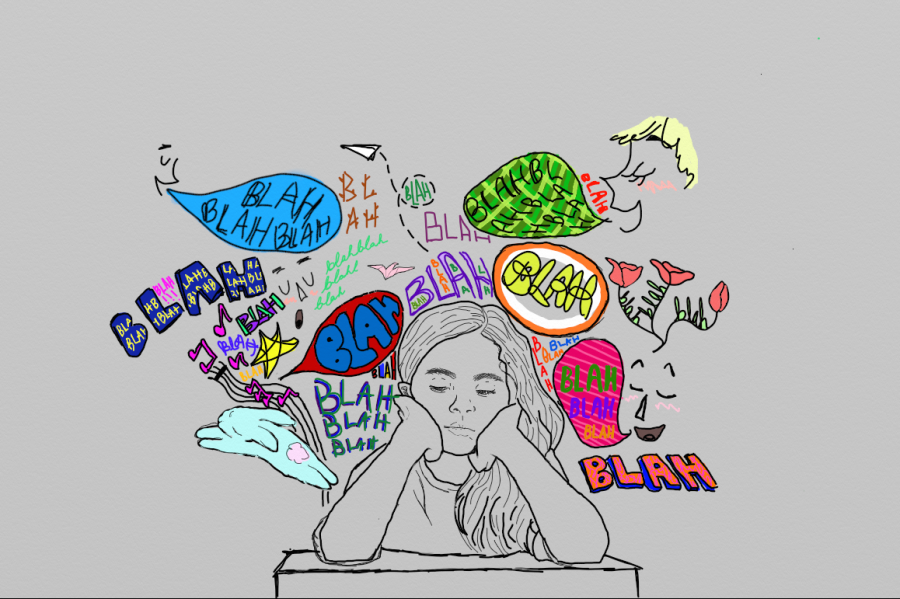Inside the mind: ADHD/ADD
Is there more to ADHD/ADD that meets the eye?
What is ADHD? What is ADD? Is there a difference? Can adults be diagnosed with ADHD? In this article, I will be informing you about the ins, outs, ups, and downs of ADHD and ADD.
There are three types or subtypes of ADHD. There is Inattentive ADHD/ ADD, hyperactive-impulsive, and combined type. They are called different things but they are all relatively the same just categorized differently.
ADHD stands for attention deficit hyperactive disorder and ADD stands for attention deficit disorder. ADHD is a chronic condition that causes attention difficulty, hyperactivity, and impulsiveness. ADD is pretty much the same but without hyperactivity. Scientists have found children with ADHD or ADD have differences in their brains than children without it. Their research shows that there are structures in the brain that are smaller in a kid with ADHD or ADD than in a kid without. ADHD/ADD causes slower than normal cortical maturation up to adult life.
What is responsible for ADHD/ADD? ADHD/ADD occurs because of the differences in the brain’s ability to concentrate, slow down, and be patient. The part of the brain that is responsible for ADHD/ADD is called the frontal lobe. The frontal lobe is the part of the brain that manages higher-level executive functions. The frontal lobe isn’t fully developed until the age of 25 for males and 20 for females. With ADHD/ADD that part of the brain doesn’t fully develop until age 30. Many won’t even reach the emotional maturity of a 21-year-old until they are in their late 30s.
ADHD/ADD symptoms usually start before the age of 12. They could also be noticed as early as the age of 3. ADHD is more likely to be diagnosed and treated in males. This is because boys are more likely to act out and be more hyperactive, this eventually causing problems at home and in the classroom. As a result, they are sent to be tested for ADHD/ADD. Be mindful that every hyperactive male child does not have ADHD/ADD, as many say “boys will be boys”. Females are usually looked over because they aren’t as hyperactive. A teacher or peer is more likely to notice the boy shouting and disrupting the class than the girl mindlessly staring out the window. Girls are less hyperactive and more inattentive, meaning they would more likely be diagnosed with ADD.
ADHD/ADD can also be genetic. They both tend to run in families, in most cases, it’s thought the genes you inherit from your parents are a significant factor in developing the condition. There is research that shows that parents and siblings of someone with ADHD/ADD are more likely to develop the disorder themselves.
ADHD and ADD share similar symptoms. Although, the symptoms can present differently in everyone. As previously discussed, ADHD and/or ADD symptoms can show differently in boys and girls. Not everyone will exhibit hyperactivity as a symptom. This is because everyone is different. Two people might share the same symptoms just in different ways.
I asked CCHS senior Benjamin Nelson, who has ADHD, What it feels like to have ADHD? How would you explain what it feels like to someone else? Benjamin goes on to say, “ For others, it’s (ADHD) just another disability, but it’s so much more than that.” I then went on to ask if he can expand on his thoughts. He says, “ (others think) That one type of ADHD is the same for everyone. When that is never the case.” He continues with, “Type I have is more of a focus or learning-like type. Where topics become difficult for me to understand to the point I have to do it step by step and even then I might have trouble learning.” As spoken previously everyone’s ADHD/ADD is different.
When it comes to the treatment of ADHD/ADD there are many different paths to take. The most common treatment for ADHD/ADD is medication. There are three different types of medication. Stimulants work by increasing the availability of certain chemicals in the brain, therefore making the pathways in the brain work more effectively. Non-stimulants work by targeting a different neurotransmitter called norepinephrine, which plays a role in executive function. It helps children control their emotions and be able to start and complete tasks. Antidepressants also work by raising the level of chemicals in the brain such as dopamine and norepinephrine, doctors found that these drugs help people with ADHD/ADD improve their attention span. They also help with impulsive, hyperactive, and aggressive behaviors.
With every medication comes side effects. Large doses of stimulants can cause over-stimulation, resulting in anxiety, panic, seizures, headaches, stomach cramps, aggression, and paranoia. Long-term use of strong stimulants can have adverse effects. Some side effects of non-stimulants are upset stomach, less appetite, nausea, dizziness, fatigue, and mood swings. Antidepressants share some of the same side effects as non-stimulants but some of the different ones are insomnia. All of these medications could also change how you feel as a person.
I spoke to one of my peers, Gabriella Vargus (They/Them), who has ADD themself about the way their medication makes them feel and this is what they had to say, “So when my prescription was higher I didn’t feel like myself at all I felt like I couldn’t eat anything but once I lowered it I still can’t really eat or feel super hungry but I still have my personality it also helps me to really stay focused”. Gabriella takes Adderall, which is one of many ADHD/ADD medications. Adderall is a stimulant medication.
Although medication is the most common approach, not everyone is required or wants to take that route. Many choose to take therapy. Therapy helps people with ADHD/ADD develop or find better coping mechanisms. The mechanisms help make tasks feel less overwhelming.
ADHD/ADD doesn’t just affect the behavior of an individual but it can also play a role in other things in life. One example of this is teen pregnancy. This topic may seem completely unrelated but studies show that teenagers with ADHD/ADD were more than twice as likely to become parents before the age 0f 20. Another study shows that participants with ADHD became pregnant younger, more frequently, and had a higher risk for early pregnancy than did their non-ADHD counterparts.
What do depression and ADHD/ADD have to do with each other? They go hand-in-hand. Research shows that up to 30% of children with ADHD/ADD also end up with a serious mood disorder like depression. Experts also say that people with ADHD/ADD will get treatment for depression at some point in their life. Depression symptoms and ADHD/ADD symptoms have a lot in common. For example, trouble with focus is one of the signs of both depression and ADHD/ADD. When people have a hard time with their ADHD/ADD it could lead to depression, in children hyperactivity and irritability could be symptoms of depression as well as ADHD/ADD.
Social isolation is something that sadly occurs in the ADHD/ADD community. When speaking with Benjamin he mentioned how important human interaction is to him, someone with ADHD. During the conversation, he speaks about first impressions and what people perceive as normal. He said, “Whatever people see that isn’t normal to them they naturally avoid” by saying this he means that “normal people” see people sometimes perceive people with ADHD/ADD as weird or not “normal” so they avoid them.
Social isolation is very dangerous. It could make people feel less than or even blame themselves just for being them. When talking to Benjamin he said, “Associating is human nature. What you use with that association is how you choose to see it.” Just because someone seems different or weird don’t avoid them because of that. Get to know them then make your decision on their character.
Children with ADHD/ADD have a chance of developing conduct disorder. Conduct disorder is a more serious pattern of antisocial behaviors. Conduct disorder occurs more commonly in boys and increases in prevalence with age. Children with conduct disorder are twice as likely to have difficulty reading and are at greater risk for social and emotional problems.
ADHD/ADD is not just a disability, it is so much more. To some, it’s a superpower. To others, it’s a burden. As a society, we have to take these things into consideration and not just lump everyone with ADHD/ADD into the same category. ADHD/ADD is usually seen in a negative light because of the stereotypes, but the disorder doesn’t make them any different than you and me.












S.B • Mar 10, 2022 at 6:19 pm
This is a really good article. Whoever wrote this has a very big future ahead of them. Will their be more like this ?